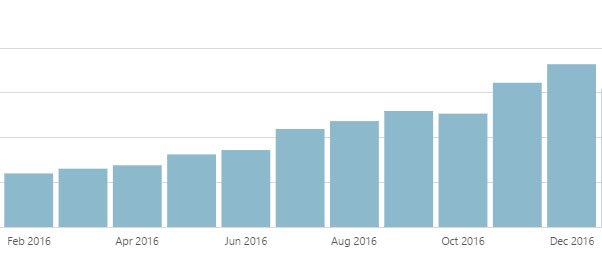Best Ways to Build Traffic to Your Website
Any business especially online will have you know that traffic to their website is like gold dust, everybody wants it and few know how to get it. So how do you generate traffic to your website.
From our experience in building websites, we continue to build successful websites with no trickery or magic. Just follow our simple AB and 6 step process and you are on your way to a popular and visible website.
A. Building a Virtual Following for a Physical Business
Without a doubt, if yours is a physical business, with a location and building, it is important to ‘claim your business’ on Google. This will allow any search on Google to return the physical location of your business and other details, including contact details such as phone numbers, email address and website link. This can be done on Google Business with a Gmail account.
Following that, the next most helpful thing for a physical business will be detailed positive reviews on the Google listing. Dedicated repeat clients, happy satisfied customers any review left on your Google listing with some feedback will continue to build, secure and reinforce the web presence in support of the physical business.

B. Increasing Website Visibility
1) Using Google Webmaster tools
Google webmaster tools is one of the top secret weapons of the industry. Using this online tool, you can include your website on the list of websites for Google to send it’s search bots too. (Learn more the Google Search Console here.
It will help with information on creating and uploading a site-map which offers a logical hierarchical layout of all the webpages on your site that will encourage and assist the search and listing (indexing) of your website on Google search results. If you use WordPress for your website, there are plenty of free WordPress plugins that generates and submit your sitemap for you.
It will also allow you to see in detail the statistics and analytics of your website traffic over time, learn about errors on your webpages and provide information on the search phrases used to arrive at your website. (Sign up here: Google Webmasters)
2) Clean, structured website
One of the key must haves of a visible website, is one that is organised and structured in a way that is simple and straightforward to navigate with organised use of parent pages, sub-pages, categories and tags.
Pulling all this together for a big website is often daunting, but start on the focused areas, think about the navigation (where the viewer goes from page to page). Make this navigation clear within the website, either by the drop down menu, or page and sub-page navigation.
If you are able to, start small, a five page, tightly focused website is far more efficient and attractive than a 20 page mess. With those main five pages, think seriously about the hierarchical content – which would your top main pages be, and which sub-pages would follow on from that.
Ensure that each page is written clearly and succinctly, the days of key word stuffing are long gone and as you write the content, remember who your target audience is. Keep coming back to them and what they are likely to look for.
3) Responsive – mobile friendly
In this age of tablets and smart phones, variable screen sizes and displays, it is important to be able to ensure that your website will display in the best possible way on each of those screens. Of course the best way to do this is to ensure that your website is responsive.
With the right ‘back end’ technology, it is fairly straightforward to ensure that your website will detect the type of device trying to access it, and will selectively choose to display the right way. This often consists of a full view on computer and laptop based browsers, moving to a mobile view when on mobile and tablet devices, shrinking the menu to a drop-down button and ensuring more viewable area is focused on the webpage.
4) Post good, solid content
Our top recommendation for building website traffic is simple. It relies on offering good, solid content, by this, it means that you write and create informational content that people want or need. By virtue of having useful and wanted information easily accessible and available, the likelihood of your website increasing in value and authority grows.
The best types of posts to build an authority are
- Q and A type posts – think of a question that would most likely be asked by your target audience and share your perspective on how you would answer it. It helps to actually give name to the question as someone would phrase it.
- List posts – List posts do well, by virtue of being content-rich. Filled with solid informational content, lists posts are often used to rank and itemise ideas, options, even opinions. In doing so, the post gets filled with good information in a logical, hierarchical manner (this post is a list post)
- Share your findings and expertise – whatever your area of expertise may be, there are always nuggets of information that are specific to your industry. The challenge really is going to be, how to get out of your own way – in this case, although something may seem to be ‘known to everyone’; that may not necessarily be true and to simply share the information written and visual, often offers an insight in to your own processes and thinking.
Of course, do not give away trade secrets and copyrighted information, but do keep in mind that sharing valuable information that will help the average person goes a long way in building trust and authority on your website.
- Write for the reader not for the search engine bots – While it is possible to include search phrases and keywords in all variations within a blog post, ultimately your write up needs to make sense to the reader and read well on top of that. This does not mean to avoid using keywords. In fact if an article is well written it would naturally include key words, for which your target audience would look for.
A good way to approach this style of writing is to think about what you would look for as a member of your target audience. For example, on a website focused on HR development, think about what information and what advantageous value you could offer to your potential audience. Articles such as ‘5 steps to becoming an effective and efficient manager’ or ‘Top time management secrets for busy managers’ or ‘How to deal with a demanding employee’ might be typical searches for a prospective manager looking for more information and more skills.
5) Images and Headings
If you were developing a website to simply be ranked on search engines, you might find that images on its own offer little value, mainly because the search bots do not give much value to images – as they can’t see them.
That said, your target audience is typically attracted to visually appealing images. Almost everyone has a preferred style and look, and in all cases, images do play a role. Wise use of relevant exciting images, will initially help to attract a persons attention, and after that, clever placement of images will help break up the monotony of textual content.
For all images it is useful to include a title and/or a description, the <alt> tag provides opportunity for a brief description of the image. (The <alt> tag is meant to accurately tag the image for the visually impaired). This is the only way that your images can claim relevance to the content.
As a minimum, for good Image SEO, an image needs to have good alt tag and title tag. The alt tag describes what is on the image and the title tag, also shown as a tooltip, the little pop-ups that appear when your cursor hovers over the image so take advantage of this to offer instructions to viewers.
Headings offer a proper way to organise the textual information on a page by ranking it hierarchically. <H1> is typically used for the page title, and following that, the sub-headings are progressively labelled. These mainly help the search engine bots determine and decide which information is most important and how the information is to rank.
Organised and designed accurately, the use of Headings will help the website be more visually appealing as well.
6) Clean back-linking where possible
Back-linking has often been given a bad name in recent years due to over use and quite often done is such an overt manner that it becomes clear that it is for the purposes of SEO.
Very briefly, back-linking refers to linking from one article or piece of information to another post, and in creating this link, it would make it appear that this post, contains relevant important information and therefore, is of good value. Back-linking in essence creates authority and it follows that it would subsequently create visibility.
However, before you go round, mass-linking, the thing to remember is this. This technique is best used in moderation and very specifically to content that is relevant.
So a good approach to this will be to write content from which other content on your website can be linked.
In keeping with the HR company website for example, a blog post focusing on ‘The Best Courses for New Managers’ could in essence outline skills a new manager needs to have (and why) and then link to some courses offered by the company itself.
Final Thoughts
In essence, SEO is not some magic bullet that will suddenly get your website ‘up there’ and staying there without some thought and consideration.
Optimising for search engines is to a great extent simply best practise a lot of the time, ensuring that relevant headers and tags are used, proper back links, proper tagging of images, most of which are simply logical.
The best way to both give value and build authority is to write and create content that is irresistible to your target audience. If you would like help building a successful website, do get in touch with us.
This article is adapted from our original post on Colour My Income.


